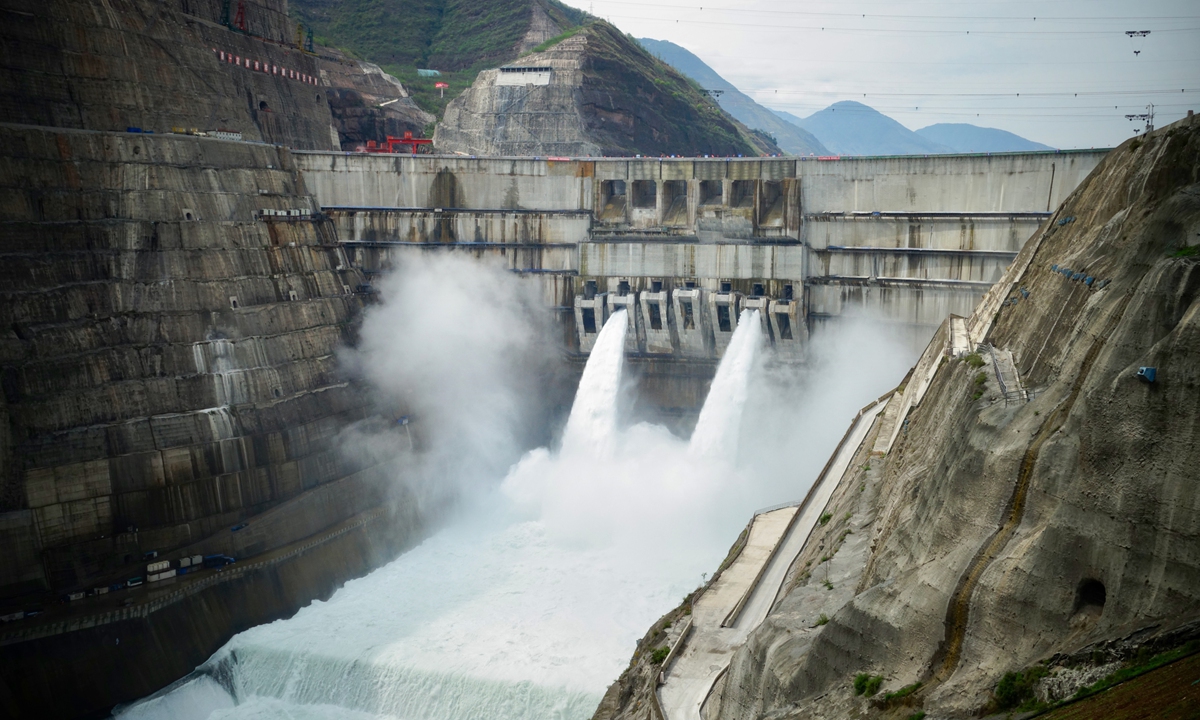
The Baihetan Dam opens to release water. Photo: Lin Xiaoyi/GT
The cumulative clean power generated by the Baihetan Hydropower Station, the world's largest hydropower project, which is still under construction, exceeded 10 billion kilowatt-hours (kWh) so far this year, another major step in China's efforts to achieve energy self-sufficiency and green energy goals.
Located in the mainstream of the Jinsha River at the junction of Southwest China's Sichuan and Yunnan Provinces, the station — being built by Three Gorges Group — is a major project for transferring the abundant hydropower from western China to the country's major economic powerhouses in the east.
Equipped with 16 independently developed hydropower-generator units with the largest single-unit capacity of 1 million kilowatts in the world, the Baihetan Hydropower Station is able to produce 16 million kilowatts in terms of total installed capacity.
Since the first units of the station were put into operation in June 2021, cumulative power generation has reached 25.6 billion kWh. The final assembly work of the last two units of the station is nearing completion, and the project is moving toward full production.
After the station is fully in operation, the number of hydropower units put into operation by Three Gorges in the main artery of the Yangtze River will reach 110, with total installed capacity reaching 71.695 million kilowatts.
That will be equivalent to three Three Gorges Hydroelectric Power Stations, which is expected to greatly ease energy curbs across the eastern parts of the country, especially the Yangtze River Delta, an important domestic production hub.
The Baihetan Hydropower Station is also helping propel China toward a green and low-carbon goal, as the country is reducing the use of coal and looking for renewable and clean energy sources.
The 10 billion kWh of electricity generated by the station can replace about 3.06 million tons of standard coal and reduce carbon dioxide emissions by about 8.38 million tons, which is equivalent to planting 33,000 hectares of forest.
In 2021, hydropower accounted for 14.6 percent of China's total power generation. The figure could reach around 17 percent this year, according to Lin Boqiang, director of the China Center for Energy Economics Research at Xiamen University.
Global Times




